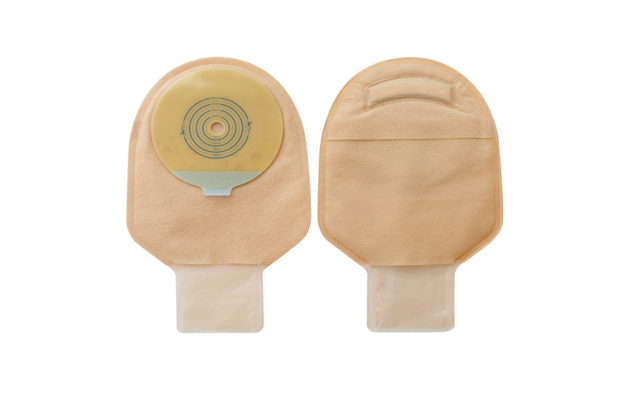Caring for a newborn is a beautiful thing, but if your baby needs an ostomy, your well-being will undoubtedly be mixed with attention to the special care required. In addition to learning to understand your child's health, you'll also need to learn new skills in post-ostomy care and figure out how to balance these needs with your busy lifestyle. Due to the young age of the newborn, it is difficult to cooperate, the skin is immature, and the resistance is poor. Strengthening the nursing of neonatal stoma and improving the malnutrition status can create a good internal environment and excellent surgery for late stoma surgery. Condition. See it with me next!
What you need to know about "stoma" parents:
①About stoma | Definition:
An "ostomy" is a general term for making a small opening in the body. This small opening, called a "stoma," allows stool or urine to pass out of the body. Currently, an ostomy is not an unusual procedure for infants and children, and there are many reasons why a newborn or child needs an ostomy. It is usually a life-saving procedure. The colostomy holes should be red like the inside of your mouth, and they should be moist and soft. When rubbing or touching the air hole, there may be slight bleeding. This is normal because the stoma has many blood vessels. They also don't hurt when touched because they don't have nerve endings.
②About stoma|type:
The type of stoma depends on the reason for the surgery. In colostomy and ileostomy, the opening is formed by part of the intestine. With a urostomy, the opening is made somewhere in the urethra. A urinary anastomosis is an opening into the urinary system. The urinary system consists of the kidneys, ureters, bladder, and urethra. The kidneys filter and produce urine. Urine is stored in the bladder from the kidneys through the ureters and then excreted. A colostomy is the most common ostomy in infants or children. It is an opening into the colon or large intestine. When undigested food enters the colon, water is absorbed. The stool is stored in the colon until it is expelled from the body. Chair (defecation) comes out of the colostomy. Its consistency can be liquid or solid. Gas is very common. An ileostomy is an opening into the ileum, part of the small intestine. The small intestine contains digestive enzymes that break down food to aid digestion and absorption of nutrients. Although they are usually found in the small intestine, they can damage the skin.
Pediatric stoma | Common problems and solutions:
①Blood oozing occurs when cleaning the stoma
The intestinal mucosa of children is soft and rich in capillaries. Under normal circumstances, the skin can tolerate short-term contact with fecal fluid, but if the time is too long, it will cause skin redness, swelling, pain, and even ulceration. It is easy to damage the mucous membrane during nursing and cause bleeding. Care should be taken to be gentle when cleaning to prevent damage to the enterostomy mucosa. If there is slight bleeding, don't be too nervous. Use a cotton ball to gently press the bleeding point for 1 to 2 minutes to stop the bleeding. Or spray a small amount of stoma skin care powder and gently press to stop the bleeding. If the bleeding continues, the pressure to stop the bleeding is ineffective, and you need to go to the hospital in time!
②There is a lot of gas in the ostomy bag
Swallowing too much gas or eating more gas-producing foods in children can lead to increased gas discharge from the colostomy. If there is too much gas in the bag, the tail of the bag body can be opened to discharge. If you want to reduce the gas discharged from your child's enterostomy, first of all, you must reduce the intake of gas-producing foods, such as beans, asparagus, broccoli, cabbage, cauliflower, cucumber, onion, garlic, milk, eggs, carbonated drinks, etc., and secondly Avoid crying or talking when ingesting food. Children should be taught to chew and swallow as slowly as possible. At the same time, measures such as using a straw to absorb water can reduce the gas discharged from the colostomy.
③ Diarrhea
Diarrhea is a common symptom. There are many reasons for Diarrhea. If children with enterostomy have Diarrhea, do not use drugs to regulate intestinal flora and treat Diarrhea at home. It is recommended to seek medical attention in time! In particular, children with an ileostomy are prone to dehydration and should be paid attention to.
Longterm Medical | Caring for Your Child with an Ostomy
Choice of ostomy products:
①Because of the thin stratum corneum of children, the skin is easily damaged, and strong chemical and drug-containing skin products, such as alcohol-containing accessories, steroid ointments, etc., are used should be minimized.
②Because of the small size of the newborn, it is recommended to use a one-piece open pocket for easy care. However, when choosing an ostomy bag, it depends on the size and type of the stoma.
③ When the stoma is separated, and the distance between the two stomata is relatively close, an ostomy bag with a slightly larger chassis can be selected, and the two stomata can be pasted in one ostomy bag at the same time.
Tip: As a parent, it is important to know the type of ostomy in your child. Each has its characteristics, and you should know how to take proper care. If you are unsure about your child's stoma, ask your pediatric nurse or doctor.
This stoma may grow with your child, especially if it takes a long time or is permanent. Since changes are regular, it is important to re-measure the stoma periodically to ensure that the size of the skin barrier you are cutting is correct. Each box of your product has a measuring ruler. Before changing the ostomy bag, the root of the stoma mucosa should be measured. The opening of the chassis should not be too large. Generally, it is 1~2mm larger than the size of the root.
Notes on changing the ostomy bag:
The stoma cleaning action should be gentle. You can use cotton-soft gauze dipped in warm water to clean the stoma and surrounding skin, wipe it dry, and then use accessories, paste the chassis. (Do not wash with disinfectant) Pay attention to the timely discharge of feces or gas. When the excrement in the ostomy bag is 1/3 or 1/2 complete, it should be discharged in time. If the gas in the ostomy bag increases, it is mainly caused by the child crying and inhaling a lot of gas. The tail of the bag can be opened to discharge.
Longterm Medical wants all babies to grow up healthy and happy!
Longterm Medical is a leading company in the industry, with advanced and complete production equipment and inspection systems and a complete set of scientific and sound management systems. At Longterm Medical, we transform this data by innovating and developing products that make life easier for people with caring needs.
For more information on Innomed® ostomy bags, refer to the previous articles. If you have customized needs, you are welcome to contact us; we will serve you wholeheartedly.
At Longterm Medical, we transform this data by innovating and developing products that make life easier for those who need loving care.
Editor: kiki Jia
Date: July 28, 2022

 English
English عربى
عربى Español
Español русский
русский 中文简体
中文简体








